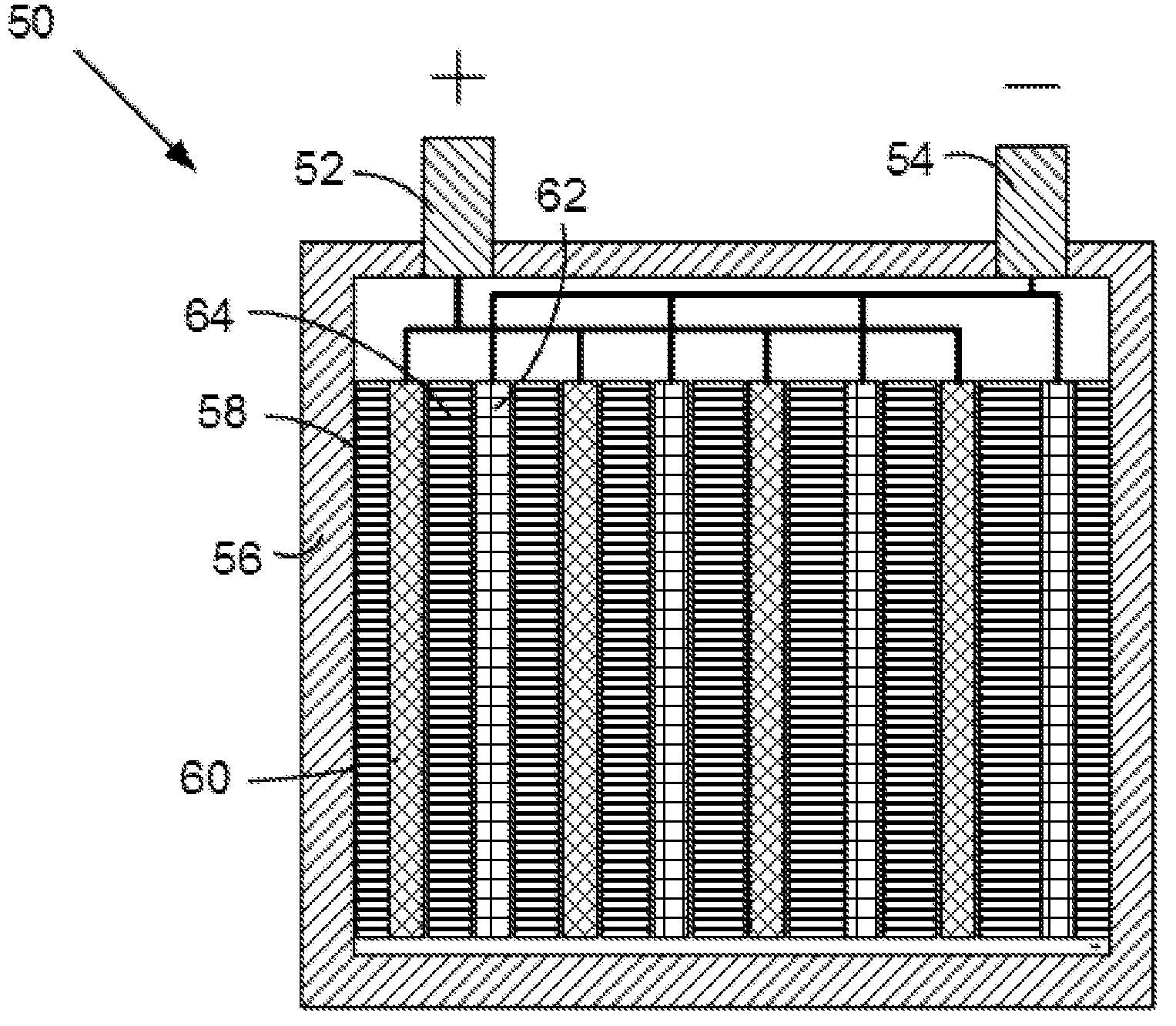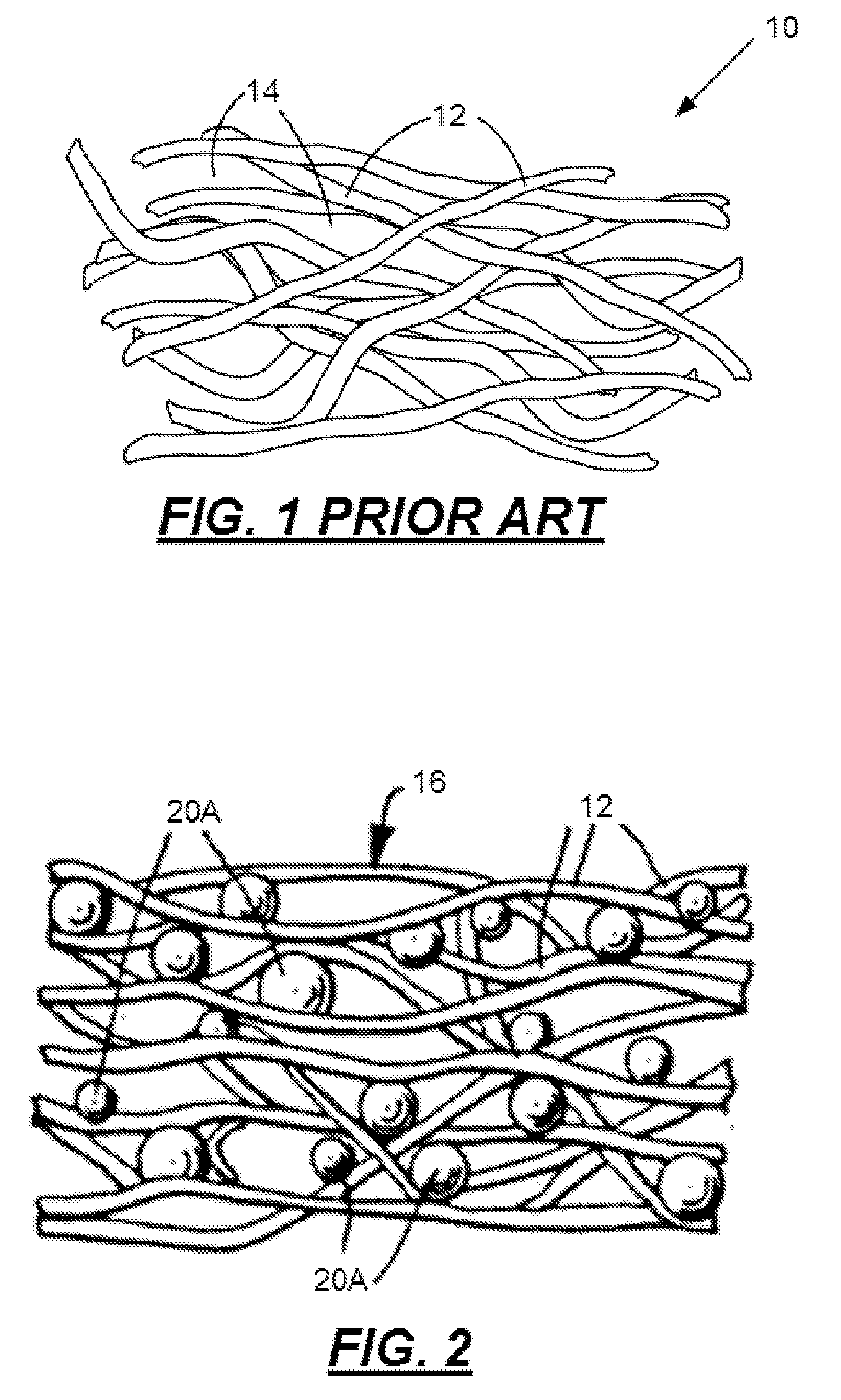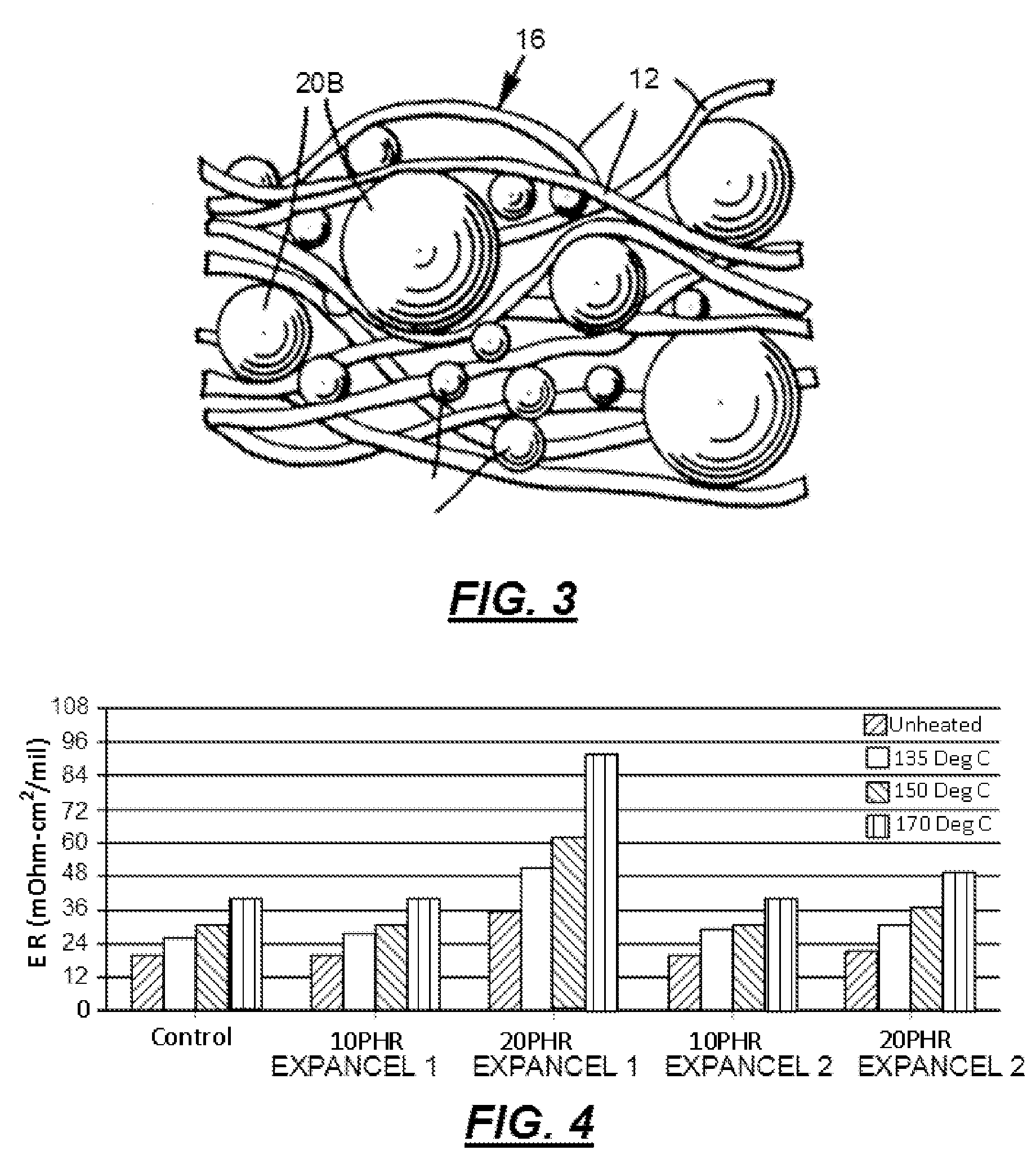Smart battery separators
a technology of battery separator and separator, which is applied in the direction of secondary cell servicing/maintenance, cell components, cell component details, etc., can solve the problems of energy storage cell thermal runaway, cell loss of water, separator dries out, etc., to improve the performance of energy storage cell, improve the electrical resistance of storage cell, and improve the effect of properties
- Summary
- Abstract
- Description
- Claims
- Application Information
AI Technical Summary
Benefits of technology
Problems solved by technology
Method used
Image
Examples
example 1
[0029]In the following example, AGM separators were made by tearing 3.4 grams AGM sheets (˜4.5″×4.5″) having a density of 300 g / m2 into pieces by hand and mixing the torn pieces into 800 ml of cold water for 24 hours. A magnetic stirring was used to stir the mixture and to produce a slurry. EXPANCEL microspheres (0.051 grams, 15 wt. %) were then were added to the cold water and AGM pieces and the mixture was stirred for ˜1 hour. The resulting mixture was poured into a ˜4″ diameter vacuum filter funnel to form a new AGM sheet. The AGM sheet was vacuum dewatered. The resulting 4″ round EXPANCEL loaded AGM sheet was then removed from the filter funnel, placed between sheets of paper towel and blotted dry. Each sheet was then permitted to dry in air for 48 hours. A control sample AGM sheet was also made by this method but without the addition of EXPANCEL microspheres.
[0030]A ceramic hot plate was adjusted to the approximate temperature. A stack of five pieces of 5″×5″×0.25″ safety glass...
example 2
[0033]In the following example, flexible rubber separators were made with and without the porosity controlling agents described above. Two different EXPANCEL products were used in this example EX-1 and EX-2 as described above. Each of the products was added to the flexible rubber separator during compounding of the rubber for the separator at the rate of 10 and 20 pounds per hundred pounds of rubber. Electrical resistances (milli-ohms-cm2) of a control example and the separators containing the porosity controlling agents upon heating for two minutes are given in the following table. In FIG. 4, the separators were heated at the indicated temperatures for two minutes.
TABLE 2ControlEXPANCEL 1EXPANCEL 1EXPANCEL 2EXPANCEL 2Temperature(no EXPANCEL 1)10 PHR20 PHR10 PHR20 PHRUnheated21.122.836.121.123.3135° C.25.527.651.827.031.3150° C.29.129.462.829.236.7170° C.40.641.893.839.748.6
[0034]In the foregoing examples, there was a slight increase in electrical resistance between the control samp...
PUM
| Property | Measurement | Unit |
|---|---|---|
| head-pressure | aaaaa | aaaaa |
| porosity | aaaaa | aaaaa |
| porosity | aaaaa | aaaaa |
Abstract
Description
Claims
Application Information
 Login to View More
Login to View More - R&D
- Intellectual Property
- Life Sciences
- Materials
- Tech Scout
- Unparalleled Data Quality
- Higher Quality Content
- 60% Fewer Hallucinations
Browse by: Latest US Patents, China's latest patents, Technical Efficacy Thesaurus, Application Domain, Technology Topic, Popular Technical Reports.
© 2025 PatSnap. All rights reserved.Legal|Privacy policy|Modern Slavery Act Transparency Statement|Sitemap|About US| Contact US: help@patsnap.com



